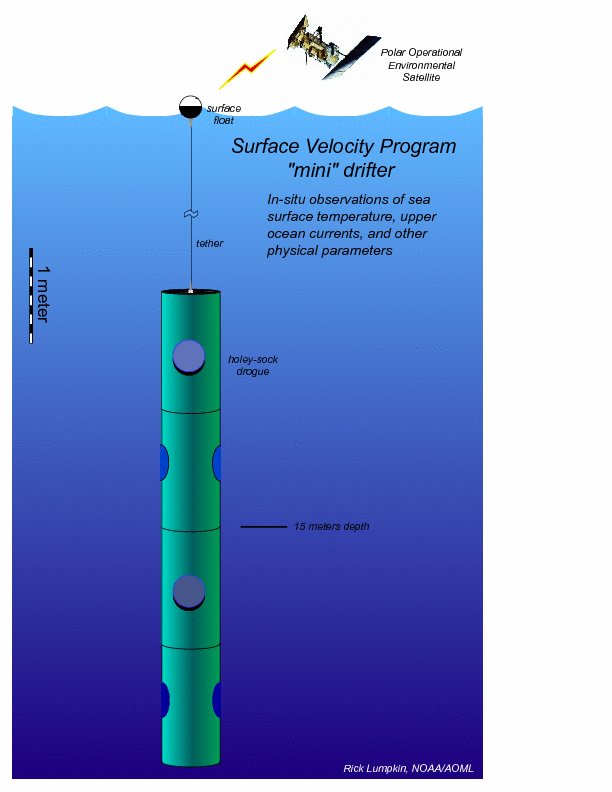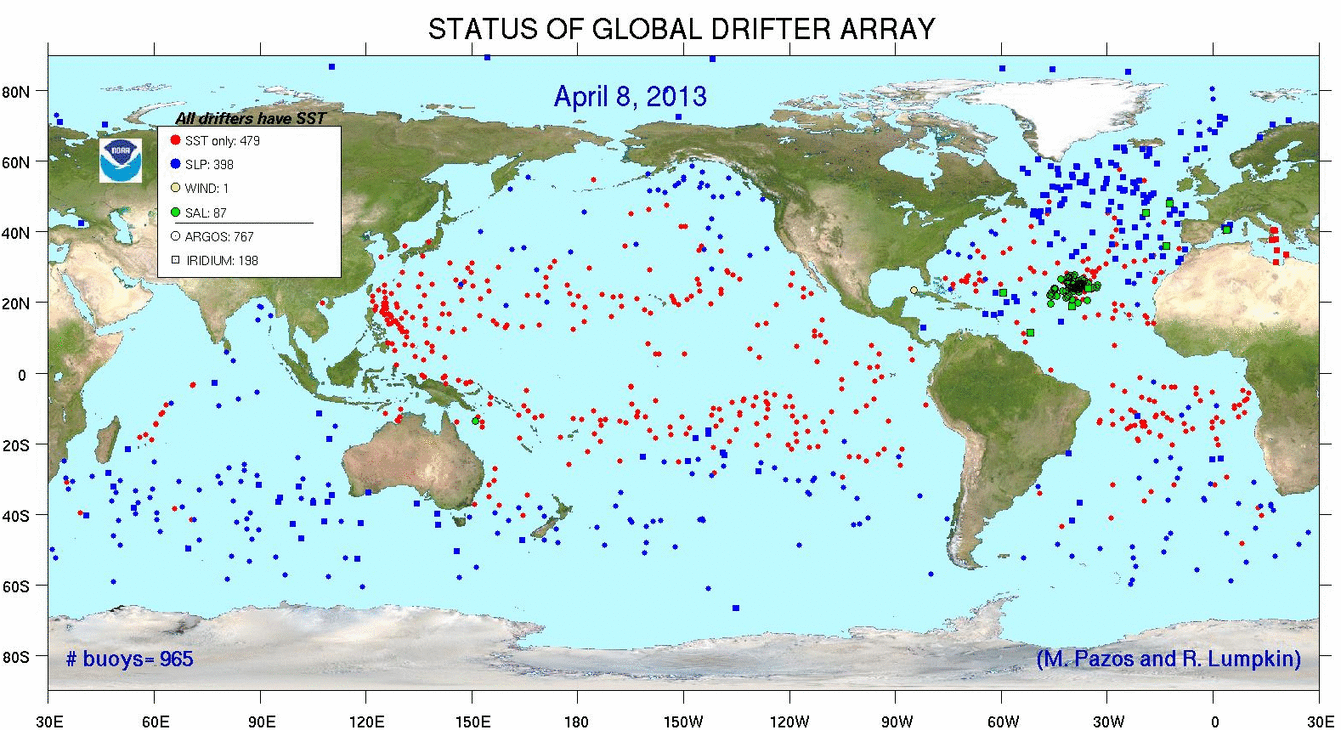Drifters
- “Drifters” are freely-floating drifting buoys that are deployed in the ocean to measure currents.
- The drifter is composed of a surface float, a tether and a drogue. There are some variations on this design, but these are the basic components.
- The surface float contains a battery, instruments that measure things like temperature, barometric pressure, wind speed and direction, and ocean salinity, and a transmitter that relays the position of the drifting buoy and data collected by the instruments on the surface float to satellites.
- The tether connects the surface buoy to the subsurface drogue.
- The drogue is a canvas-covered cylindrical frame with holes in it that sits at about 15m below the ocean’s surface. Because the drifter sits at this depth, its movement is influenced by processes occurring in the upper 15m of the ocean.

Source: http://www.aoml.noaa.gov/phod/dac/gdp_information.php
- Drifters are deployed by throwing them from the stern of a vessel into the ocean. Prior to deployment, the drifter drogue and tether are bound by a water-soluble strip of tape. This tape dissolves when the drifter is deployed, releasing the drogue into the surface layer.
- Drifters have been deployed throughout the world’s oceans. Their movements are used to generate a map of ocean surface currents, and can also be used to ground-truth measures of the ocean’s surface taken by satellites (e.g. temperature, chlorophyll).
- The image below shows the locations of all the drifters deployed in the ocean on April 8, 2013.

All info on this page from: http://www.aoml.noaa.gov/phod/dac/index.php and http://www.adp.noaa.gov/
